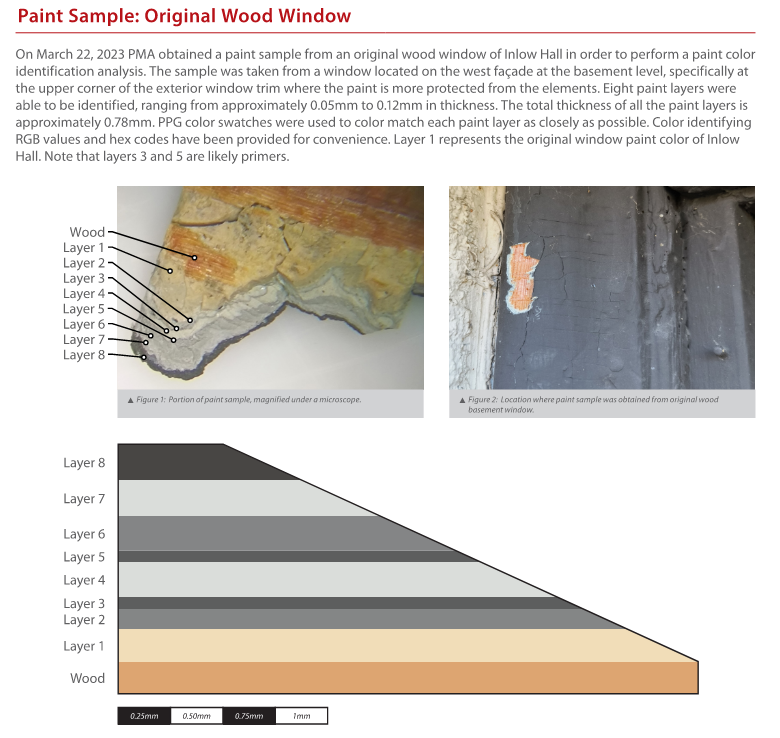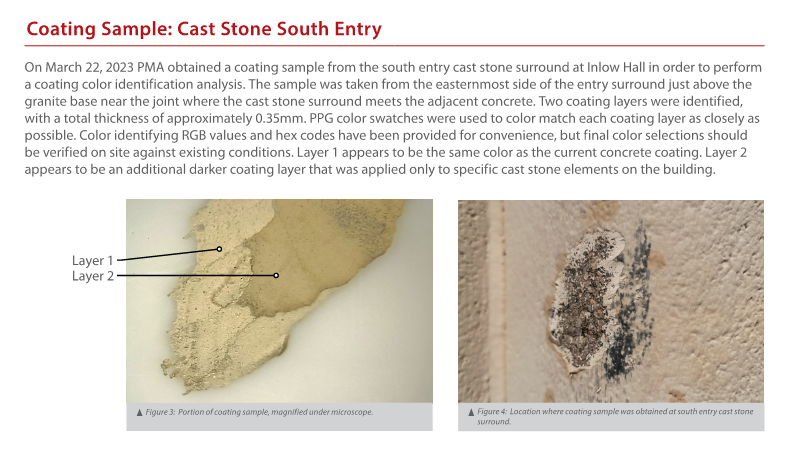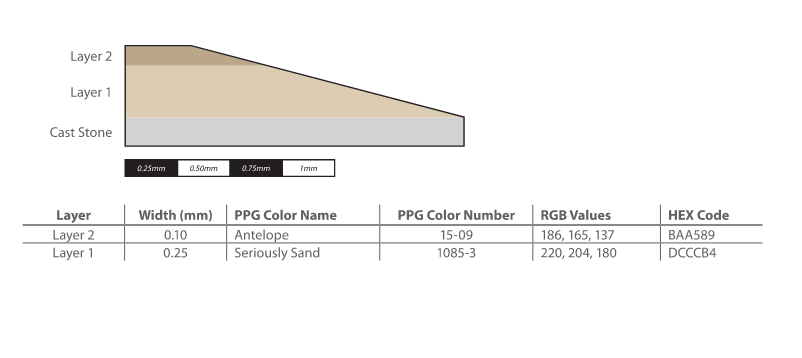The What, Why, and How of Coatings Analysis
Coatings analysis is the scientific study of a broad range of historic architectural finishes that is used to determine the color and nature of surface finishes at a given point in time. This helps researchers understand the building’s architectural history and how its appearance has changed over time.
Coatings analysis is completed by safely removing a small sample of coating layers from a surface, slicing the coating sample in half, and observing the cross-section of the many coating layers through a high-powered microscope. This gives the opportunity for the observer to see the number and nature of the coatings applied to a surface through time, ideally including the original coating layer at the bottom to the most recent coating layer at the top, and everything between. It also allows the researcher to determine which architectural elements are original to the building and which were added at a later date, depending on if there is the most coatings or the least coatings on an architectural element, respectively. The amount of weathering, degradation, and dirt that has collected on a coated surface can establish a relative application date. For example, a significant amount of weathering or dirt accumulation on top of a layer of coating shows that a period of time has passed before the next layer of coating was applied. Using more in-depth analysis also allows the determination of the presence of certain types of pigments that have known dates of introduction, which can also be a known clue for dating an architectural element. For example, zinc oxide was introduced to paint as a pigment in the mid-19th century and latex as a binder in paint in the 1940s, so the presence of these pigments and binders would date the paint to either after the 1840s or after the 1940s, respectively.
Completing this research gives an understanding of the decorative, architectural, and social history of a site and gives information for appropriate replication of suitable coating finishes.
Why and how PMA completed coatings analysis on Inlow Hall
PMA completed paint analysis on Inlow Hall in order to determine the first color of the windows and to determine how many layers were applied to the cast stone elements of the building. By removing the cast stone coating, PMA was able to determine the cast stone elements of Inlow Hall match the cast stone used to build the Grand Staircase. By determining the historic color of the painted windows, the proposed replacement windows will be able to match in color to what the historic once were, therefore making Inlow Hall look like it once had when it was first constructed. Below is information on each of the coating samples processed from Inlow Hall.




Below are links to more information on coatings analysis and several historic coating analysis research projects from the eastern United States and United Kingdom:
colonialwilliamsburg.org
mountvernon.org
lincolnconservation.co.uk
Blog post written by Jessica Schmitt, PMA Preservation Planner.
